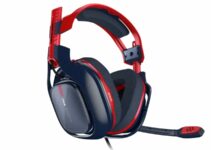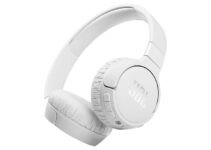The Razer Kraken is a popular headset among gamers looking for a comfortable design with some high-end design functionality to cater to gaming demands. Being compatible with PlayStation, Xbox, Switch, and PCs, it’s one of the widely used high-end gaming products out there.
Despite its flawless design and build quality there are still some shortcomings as regards the compatibility of the mic with PC devices – especially Windows devices.
A lot of users often complain that its detachable mic doesn’t work with their PC, especially in games that require multiplayer communication. If you happen to fall in such a category of displeased users, don’t worry, we’ll be showing you how to solve it in subsequent sections of this article.

Razer Kraken Mic Not Working: Possible Causes
There are not a lot of, hardware-related issues that may be causing this problem, especially if your headset is fresh out of the box. The majority of what you’re facing can be corrected with your PC’s microphone settings.
-
Microphone is Muted
The Razer Kraken has a small mute/unmute button on the left ear cup of the headset, near the volume wheel. If you have it pressed without knowing your mic may not work with other devices. Check to see if the small LED indicator on the microphone is lit up; if it is, that means it’s muted and you’ll want to unmute to use the mic.
-
Wrong Microphone and Sound Configuration
There are times when the problem lies in wrongly configured microphone settings and recording settings. This is often the case if you’ve never used an external mic on your PC before. You’ll need to make a few adjustments to get it to start working with your PC. You can tell if this is the situation if you have access to another PC where an external mic/headset has been used before so you can try yours to see if it works.
-
Faulty/Outdated Audio Drivers
While this may be less likely if you’re normally able to use audio features without the headset and mic attached, it’s not something you’ll want to completely rule out. You’ll want to utilize the Driver Easy tool to ensure that there’s no outdated audio driver on the system. If you’re using a PC with a dedicated graphics card, you can also check the graphics card control center to see if the correct audio driver is installed on your PC. Both methods are a lot easier than doing it manually through the Device Manager in Control Panel.
-
System Mic Is Being Used by Another Program
If you happen to have a program running in the background that’s using your system’s microphone, then you most likely won’t be able to use it in your other app. This is often the case if you’re leaving apps like Discord, or Zoom running and trying to use the mic in a game like COD. To confirm there’s no app making use of the mic in the background, look through the taskbar and see what’s being minimized.
-
Broken Headset Hardware
Although this is a lot less likely, it’s not a possibility to completely rule out especially if you’ve had your headset for a while or have generally been mishandling it. It’s also the most common cause when it used to work during the time you got it but suddenly started to develop a fault.
Razer Kraken Mic Not Working: How to Fix
There are several ways you could solve the problem if your Razer Kraken Mic is not working. While we’ve covered some that don’t need a lot of discussions above, we’ll need to do some step-by-step for others.
-
Make Sure You’re Using the Right Microphone and Sound Settings
In most cases, this will be the solution to your problem – it’s common across users who haven’t used an external mic on their PC before. First, you want to navigate through Start >> Settings >> Privacy >> Microphone, make sure you allow microphone access on your device. When done, scroll down to ensure that your choice app isn’t toggled off when it comes to granting specific apps access to the mic.
Next, you’ll want to change the Sound setting to make your Razer Kraken headset the default recording device. To do this, simply navigate type in “Control Panel” on your search bar, and launch it. on the search bar at the top right of your Control Panel, search for “Sound,” open it, and toggle to the “Recording” tab. Now make your headset the default recording device. If it’s not visible at first glance, right-click and tick “Show Disabled Devices.”
-
Fix/Update Your PC’s Drivers
There are two ways to tackle this issue; you may want to roll back your driver if your headset was previously working, but stopped after a driver update, and may want to conduct an update if you’ve tried the option above and nothing seems to be working while your system is fresh out the box.
To roll back drivers, simply navigate through Control Panel >> Hardware and Sound >> Device Manager, and double-click on “Audio inputs and outputs” from the list of available. Right-click on the “Microphone” option to either roll back or update the drivers. If you don’t get the rollback option there, you’ll want to double-click again and toggle to the “Driver” section.
When updating, make sure you choose “Search automatically for drivers” so that the systems driver installation wizard handles much of the tasks. Alternatively, you can install and run Driver Easy software, click on the “Update” button, and follow the prompt to get it done.
-
Uninstall and Third-Party Auto-Installed by Razer
There are some times when Razer automatically installs management software on your PC especially if you’re plugging it in for the first time. These control apps often come with its settings different from the Windows stock settings, which may conflict with parts of the headset (like the mic) working properly.
If you don’t know how to navigate these apps, you’ll want to uninstall them completely and only work with the microphone settings on your PC, or what’s within the choice app you’re using the headset with.









